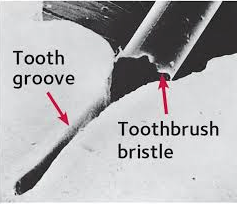BPA-Free Sealants
A sealant is a protective coating that is applied to the biting surfaces of back molars, where four out of five cavities in children are found. Sealants act as a barrier for food, plaque and acid, and fill in the deep grooves and pits that can be otherwise hard to clean and prone to decay.
Dental sealants act as a barrier to prevent cavities. They are usually applied to the chewing surfaces of the back teeth (premolars and molars) where decay occurs most often.
Thorough brushing and flossing help remove food particles and plaque from smooth surfaces of teeth. But toothbrush bristles cannot reach all the way into the depressions and grooves to extract food and plaque. Sealants protect these vulnerable areas by “sealing out” plaque and food.
Due to the fact that sealants are not “drilled” into the tooth, they should be replaced roughly every two-four years
The photo below exhibits why sealing teeth with heavy grooves is so important. A microscopic cross-section of this tooth illustrates how deep an enamel groove can be, and how microscopically bacteria can pool in an area where even the thinnest toothbrush bristle cannot reach.

Therefore, applying a thin coating material into the grooves will protect the biting surfaces of the teeth from cavities. This is especially important for newly erupted permanent molars, as that is the time they are most susceptible to cavity attack.